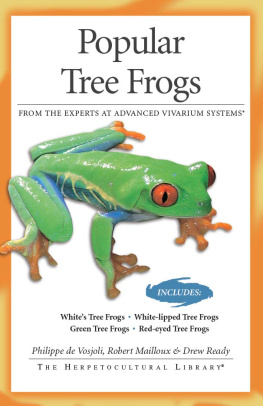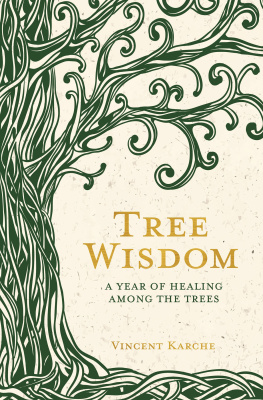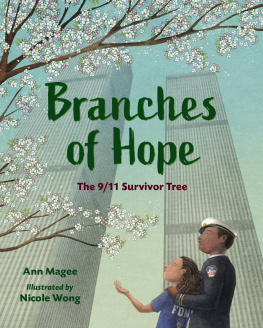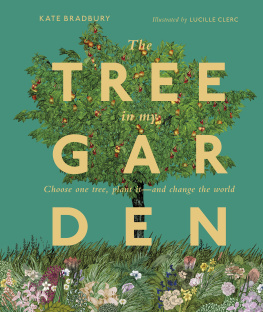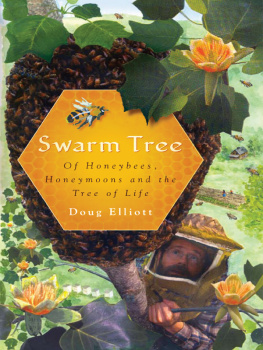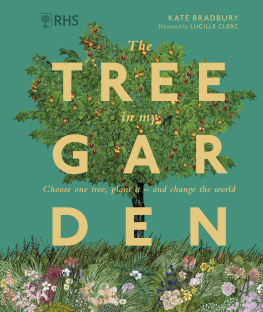
Tree
A LIFE STORY
DAVID SUZUKI &
WAYNE GRADY
Art by ROBERT BATEMAN
Tree
A LIFE STORY

GREY S TONE BOOKS
DOUGLAS & MCINTYRE PUBLISHING GROUP
VANCOUVER/TORONTO/BERKELEY
Copyright 2004 by David Suzuki and Wayne Grady
Art copyright 2004 by Robert Bateman
04 05 06 07 08 5 4 3 2 1
All rights reserved. No part of this book may be reproduced,
stored in a retrieval system or transmitted, in any form or by any means,
without the prior written consent of the publisher or a license from
The Canadian Copyright Licensing Agency (Access Copyright).
For a copyright license, visit www.accesscopyright.ca
or call toll free to 1-800-893-5777.
Greystone Books
A division of Douglas & McIntyre Ltd.
2323 Quebec Street, Suite 201
Vancouver, British Columbia
Canada V5T 4S7
www.greystonebooks.com
David Suzuki Foundation
2211 West 4th Avenue, Suite 219
Vancouver, British Columbia
Canada V6K 4S2
Library and Archives Canada Cataloguing in Publication
Suzuki, David, 1936
Tree : a life story/David Suzuki and Wayne Grady; art by Robert Bateman.
Includes bibliographical references and index.
ISBN-paper 1-55365-016-6
ISBN-ebook 9781926685533
1. Douglas firLife cycles. 2. Douglas firDevelopment. 3. Douglas firGrowth.
I. Grady, Wayne II. Bateman, Robert, 1930 III. Title.
QK494.5.P66S88 2004 585 .2 C2004-903383-2
Library of Congress information is available upon request
Editing by Nancy Flight
Copyediting by Naomi Pauls
Jacket and text design by Jessica Sullivan
Jacket art by Robert Bateman
Printed in Canada by Friesens
Printed on acid-free paper that is forest friendly
(100% post-consumer recycled paper) and has been processed chlorine free.
The paper is 70-lb. Synergy and was manufactured by Fraser Papers.
Distributed in the U.S. by Publishers Group West
We gratefully acknowledge the financial support of the Canada Council for the Arts,
the British Columbia Arts Council, and the Government of Canada through the Book Publishing
Industry Development Program (BPIDP) for our publishing activities.

This book is dedicated to Ellen Adams,
whom I first met as a graduate student in zoology
at the University of British Columbia.
She was bright and vivacious
and had interests far beyond the field of zoology.
She died too young. In her generosity,
she supported the work of the David Suzuki
Foundation and has helped to make this book possible.
DAVID SUZUKI

CONTENTS

A book is like a single tree in a forest, in that it exists in conjunction with and because of a great many others around it. Our thanks to the many biologists and researchers who have studied Douglas-fir and who brought its amazing characteristics to light. Our thanks also to Rob Sanders, at Greystone Books, who enthusiastically and relentlessly hounded us to complete the manuscript.
To Nancy Flight, who gave the original text her usual perceptive reading and excellent guidance, and to Naomi Pauls, whose copy-editing skills saved us from many embarrassments, we extend our deep gratitude. We also want to thank Alex Gabriel, who did a superb job of gathering research material for the book. It is an honor to have the wonderful art of Robert Bateman in our book.
Friends who have helped in many ways with the preparation of this book include Karen Landman, Chris Pollock, Larry Scanlan, Genni Gunn, Frank Hook, Elois Yaxley, and Faisel Moola.

T his book is a biography of one tree, a Douglas-fir, but it could be any treean Australian eucalyptus, an Indian banyan, an English oak, an African baobab, a mahogany from the Amazon, or a cedar of Lebanon. All trees attest to the wonder of evolution, the ability of life to adapt to unexpected challenges and to perpetuate itself over vast periods of time.
Rooted securely in the earth, trees reach toward the heavens. All across the planet, treesin a wonderful profusion of form and functionliterally hold the world together. Their leaves receive the Suns energy for the benefit of all terrestrial creatures and transpire torrents of water vapor into the atmosphere. Their branches and trunks provide shelter, food, and habitat for mammals, birds, amphibians, insects, and other plants. And their roots anchor the mysterious underworld of rock and soil. Trees are among Earths longest-lived organisms; their lives span periods of time that extend far beyond our existence, experience, and memory. Trees are remarkable beings. Yet they stand like extras in lifes drama, always there as backdrops to the ever-changing action around them, so familiar and omnipresent that we barely take notice of them.
I am a zoologist by choice and training. All my life, animals have commanded my attention and my passion. The very first animals I became aware of were my parents, siblings, and playmates, followed by my dog, Sport. My parents were avid gardeners, but plants never excited me; they were not cute and did not move or make sounds. Fishing was my childhood passion, salamanders and frogs were prized catches in expeditions to ditches and swamps, and the amazing variety of insects, especially beetles, was a constant fascination. It was not an accident that I spent my adult career as a geneticist studying an insect, the fruit fly Drosophilamelanogaster.
So why would an animal lover write a book about trees? Ever since Rachel Carsons seminal book, Silent Spring, focused the worlds attention on the importance of the environment, people have decried the destruction of the worlds forests and the unsustainability of industrial-scale forestry practices. Like many activists, I have been swept up in the movement to protect old-growth forests in North and South America, Asia, and Australia but have mainly been concerned about the habitat they provide for other organisms, the loss of biodiversity in such forests, and their role in global warming. It was a single tree near my island cottage that finally moved me to realize what a marvel a tree is.
A trail winds from my cottage to the beach, sloping steeply where the soil ends and the sand begins. There, at the soils edge, a magnificent Douglas-fir towers over 50 meters (160 feet) tall and perhaps 5 meters (16 feet) in circumference. It may be four hundred years old, which means it began its life around the time Shakespeare began writing King Lear. It is a peculiar tree because it juts out horizontally from the bank above the beach, then arcs upward at a 30 angle, and finally turns straight up. The horizontal section of the trunk is a wonderful place to sit or begin to climb, and we have hung ropes around the rising trunk to suspend swings and hammocks.
That tree has endured our activities, provided shade, fed squirrels and chipmunks, and harbored eagles and ravens, but it always hovered on the periphery of our consciousness. One day, I lazily gazed at the misshapen trunk of that tree and realized with a shock that hundreds of years ago, when it was just starting to growsay, about the time Isaac Newton observed an apple falling from a tree in Englandthe land on which the tree first germinated must have slumped toward the beach, tilting the tree out on an angle over the sand. The young stem had to alter its growth pattern to keep climbing upward to the light. Years later, another slide of the land must have dropped the tree trunk further so that it was horizontal, while the upward curve had to compensate yet again to become vertical. That tree was mute evidence of history.
Next page





